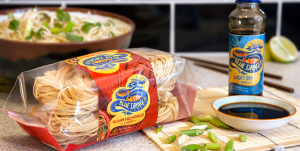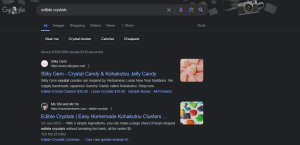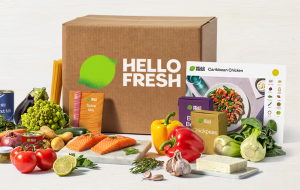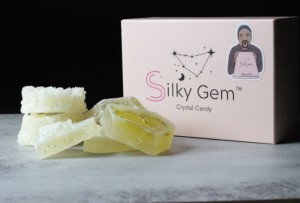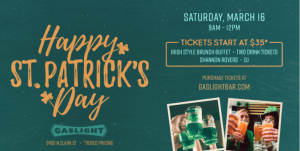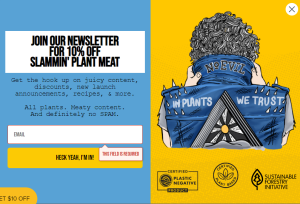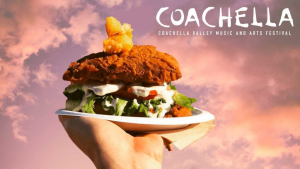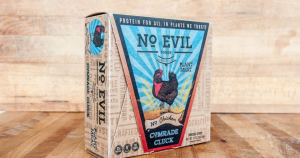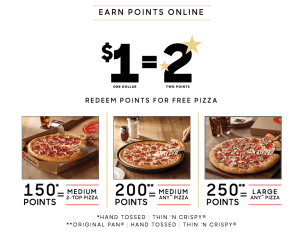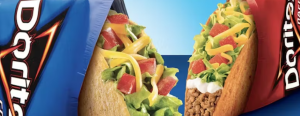
15 Effective Food Marketing Strategies: A Guide to Attract the Foodies
Have you ever wondered how to truly win the heart of a foodie? It is not just the food itself but the display, packaging, price, and aesthetic of the food that it gives off. Several restaurants and popular industries that make snack versions of meals (you will see what I mean later in this blog.) Understanding how to attract and how to bring out the inner attraction a foodie may have is all about the psychology behind what attracts these consumers.
As fun and easy as this way sounds, it actually is not. But you need to know how the food and beverage industry heavily relies on our 5 senses. That is to touch, to smell, to see, to taste, and to hear. It can be tough at times to nail them all at once. But believe it or not, some successful food and beverage companies understood the art of these senses. And clearly, you can see them thriving now! Of course, this also depends on the quality and pricing of the food, but for a foodie, if it’s worth it. It is worth it!
If you are associated with the Food and Beverage sector, you know that just good food is not enough. It’s the branding, the advertisement, and the whole aesthetic of that one item. Yes, that is how much importance you have to give that item in order for it to thrive. So, if you are in search of cool food marketing strategies for your business, you are in for a good time with this quick read.
15 Effective Food Marketing Strategies To Grab the Foodies Out There
1. The Packaging
Do not underestimate the power of packaging. Here, we will include a couple of examples to show you why packaging matters. Yes, this category may be expensive, but it will be worth it for your product. Although they say, “Don’t judge a book by its cover.” But in reality, we are humans, and we will judge (Not people, just products!)
Packaging is like the initial attraction for a person to tick off from their checklist before buying the item. However, this does not only incorporate the literal packaging. It actually starts off with the logo design of your brand.
For example, check Men With The Pot. Two Polish friends started off this brand by combining popular social elements like ASMR and cooking in the wild together. You would be surprised how people watch videos like these with obsession. Men With The Pot started off with a YouTube channel and later developed their merchandise. Their products may not be edibles, but they are related to the food and beverage industry.
Take their knives, for example. They have a unique logo that is embedded in the knives. Additionally, they partnered with Cooking Guild, a notable brand. These visuals are bound to gain instant customer attraction and trust.
Clearly, you can see that their products are not of cheap quality, and they are not here to play. This automatically shows their customers the quality and worth of their products. They even maintain a website (that in itself is very important).
Although some may argue that YouTubers who incorporate food into their content are not necessarily part of food marketing strategies, the truth is that they are. In fact, they have even extended their reach by collaborating with ASMR and selling merchandise to those who are interested in this particular food category. This approach is a well-thought-out marketing strategy that has proven to be successful.
Now, take a look at Blue Dragon, known for its unique blends of Asian seasoning and aesthetic packaging. It makes the product itself look fancy. The new packaging design of Blue Dragon food has replaced the old, dull design with a more vibrant and culturally relevant one. The previous packaging failed to showcase the colorful ingredients and flavors of Asian cooking. However, the new design adds an element of excitement and bright colors to the brand experience, making cooking a more cheerful and enjoyable experience.
The new look reflects an ever-changing Asian culture with an altogether less formal appearance, tempting the consumer to be expressive in the kitchen with its products.
2. Brand Positioning
Depending on the category of your food and beverage business, such as snacks, restaurants, takeaway outlets, or specialized food items, it’s important to consider if your business will thrive in a particular area or industry. For example, if you are a fish soup distributor in an area where American hamburgers and BBQs are popular, your business may not do well. This is where market research becomes valuable.
By conducting proper research, you can identify the best location for your speciality and determine where it will thrive. For instance, fish soup may be better suited for a street food aisle where fresh food is popular rather than in an area where fast food dominates. Here’s an example:
Udon Shin is a small and cozy restaurant that is well-known for its thick udon noodles that are served fresh and hot. This restaurant is especially famous for its udon carbonara-style dish, which is topped with a slice of crispy bacon. This dish is a crowd favorite. Every bowl of udon at Udon Shin is prepared with the utmost care. The noodles are made, cut, and boiled fresh for every order, ensuring a delightful dining experience.
They also serve beverages from carbonated drinks to beer. The overall vibe this street food outlet gives is very cozy and homely. Their servings are generous, and the place is perfect to go out on dates, too!
But let’s say, this street food outlet decides to open up in a place where there are popular BBQ outlets. Probably (hypothetically speaking) this will not match up.
So, with this, you should know where to place your brand or restaurant in order to market your food better.
Another short example to give you an idea: In New York, hot dogs are the OG, right? But you won’t see hot dog stands just anywhere. You will see them in certain locations, such as family parks or toward the edge of an office street. Where will you not see a hot dog stand? Where there are 5-star Michelin restaurants. It just won’t attract the people who look for fancier options.
3. Blogs
Did you know that having a blog can help search engines refer your restaurant to people seeking similar places? Blogging can build trust, recognition, and growth, making it a powerful marketing tool for the food industry.
With blogs, you can take huge advantage of SEO. You can integrate this with your other social media platforms, such as Instagram and X (Twitter), just like spreading the word and ensuring that people all around get to read your blog posts. This is the best mode of communication you will have with all the foodies out there.
If you own a website, it is crucial to regularly maintain and optimize your content with the assistance of professionals. This ensures that your website stays relevant and doesn’t get lost in the crowd after a few months. By doing so, you can reach out to new customers, ignite their curiosity, and draw them towards your website.
Take a look at Silky Gem.
They are famous amongst all the popular ASMRTists for their edible crystals. They maintain a blog portfolio, advertising their brand and keeping their customers engaged with fun content on their website. Their blogs are so maintained that when you search for “edible crystals” on search engines, their website pops up first.
4. Know Your Audience
Caviar, Truffle, and Wagyu. What vibes do these food items give off to you? If your answer is boujee or posh vibes. You are correct. Now, who do you think would attract more of these items? In super fancy and $$$ restaurants, right? You will not find these items in your average fast-food outlets. And lastly, who do you think would prefer food items like these? Definitely not kids, and definitely not those people who aren’t willing to spend thousands of dollars on food.
Surely, you get the point by now! For effective food marketing, you need to know your audience and make sure that your strategy targets them. For instance, Vloggers are known to try expensive, once-in-a-lifetime food items like the ones mentioned above to show their viewers, and so on. Now, we don’t mean that you should shift to expensive food items in order to grow, no.
For example, if your expertise is in energy drinks like Powerade, you are more likely to target the youth and active-fit audience—those people who are into gyming and active sports.
This way they know their target audience, plus they have done a great job at advertising and using other strategies (which are mentioned in this blog) to better market their beverages.
Learn more: Best Marketing Strategies Decoded: 10 Dominating Brands
5. Subscription Boxes
Here is an example of Sakura Co., a popular food industry that markets aesthetic and famous Japanese snacks and teas through the power of a monthly subscription box for individuals who either vlog or simply enjoy adorably packaged items.
Their marketing strategy is skyrocketing in Japan and all over the world. This business loves to support local Japanese snack makers, compiling multiple different snacks and candies from various snack makers in one box and sending a little booklet containing all the information about the snacks and candies included in the box.
This has proven an effective food marketing strategy for ready-made food items. Additionally, they are targeting those interested in Japanese culture and who are interested in trying new kinds of sweets or simply for the aesthetic (it’s a consumer thing).
Here is another example of a monthly subscription box that targets the working class, those on a diet, or probably those on a budget and who have difficulty cooking.
Hello Fresh is known for its cost-effective, limited-mess, and no-waste food packages. They send their subscribers the exact amount of food perfect for their calorie intake, and the packages come with an instruction manual and other options for vegetarians, etc. Pretty cool, right?
6. Sponsor Influencers
Influencer marketing is becoming more popular. If you’re planning to collaborate with an influencer, be prepared for a surge of traffic on your website. By partnering with a popular influencer, you can not only increase your audience and customer base but also demonstrate trust and authenticity towards your brand.
For instance, let’s take Silky Gem’s case. Their food marketing strategy was quite successful, and they even collaborated with popular influencers to promote their brand. One such collaboration was with @thisdadtiktoks, where they introduced a pickled edible crystal. This product was a hit among ASMRtists and hard candy lovers.
7. Make a Statement With The Power of USPs
Every brand has a Unique Selling Point, and if you feel that you don’t have one, create one. It is tricky but not unachievable. Let’s say you specialize in making cheesecakes. Now your USP won’t be “the best cheesecakes in town”. That is too simple. Also, several other products will label themselves as the best (blank) in town. Highlight what makes your cheesecake different from the rest of the ones out there.
Take Baskin Robbins, for example. They started the unique “31” concept of offering a different flavor for every day of the month.
Read more: Guide on How to Do Instagram Marketing (20 Tips for 2024)
8. Host Events
If you own a barista or are a small coffee/ beverage dine-in or takeaway restaurant, hosting fun events every now and then is going to make people love coming to your restaurant the most. People will have an event to look forward to. It will make their day better. People would want to plan it out with their friends.
Let’s say it’s St. On Patrick’s Day, you can decorate your residence according to that aesthetic, giving people a more fun experience on that day. Secondly, they will know that your restaurant is the kind which hosts small special events for special occasions.
Gaslight Bar serves up an Irish-style brunch buffet and DJ to keep guests celebrating all day long.
9. Email Marketing
Email marketing may seem like an outdated strategy, but it can be highly effective. By using email marketing, you can communicate directly with your subscribers and offer them promotional deals, discounts, new products or recipes.
Source: No Evil Foods
This helps to maintain a strong connection with your current and future customers, reminding them of your brand and what you have to offer. People are often busy, so creative and engaging email marketing can serve as helpful reminders and keep them engaged with your brand. This food marketing strategy makes your customers feel unique so don’t skip this tip out!
10. Take Part in Large Events
The earning potential and recognition you receive from participating in large events such as Coachella or beach parties depends on the type of food and beverage you offer. If your food is well-suited for stalls, you may have an advantage. However, regardless of your food type, participating could be highly profitable and beneficial for your business.
Read more: 10 Benefits Of Online Reputation Management And Why It Is Important
11. Offer Online Ordering And Delivery
Ordering food from restaurants and fast food chains has always been popular, but since the pandemic, it has become an even bigger trend. People now prefer to enjoy restaurant-style food in the comfort of their own homes or even at their workplace. This trend highlights the flexibility of your marketing strategy and shows that you can reach your customers anytime and anywhere through the power of delivery.
Source: Apple bees
12. Promote Ethical Practices
Consumers nowadays are more conscious about ethical practices and environmental responsibility when making a purchase decision. This holds true, especially in the food and beverage industry, where highlighting your commitment to sourcing, production, and packaging methods that are beneficial for both people and the planet can make a huge impact. To integrate this message into your marketing strategy, here are some tips to follow:
Local Sourcing
Highlight your use of locally grown ingredients by showcasing photos of farmers’ markets and partnerships with local farms on your packaging and social media. This will support nearby farmers and reduce your carbon footprint through shorter transportation distances.
Sustainable Agriculture
Promote any practices that prioritize ecological health. If you use organic ingredients, regenerative agriculture techniques, or water-saving irrigation methods, let your audience know!
Ethical Production
Consumers are increasingly concerned about the ethical practices of the brands they support. To gain their trust, be transparent about your ethical standards. You can also consider partnering with organizations like Fair Trade Certified or using cage-free eggs and ethically sourced seafood.
Eco-Friendly Packaging
Highlight your commitment to sustainable packaging solutions. Look for biodegradable or recyclable materials for your product containers, or explore innovative options like edible packaging.
No Evil Foods produces sustainable and small-batch plant-based meat alternatives with innovative compostable packaging and plant-based ink.
13. Loyalty Programs for the Foodies
Consider implementing a points-based system to reward customers for their purchases. Every time a customer buys something, they earn points which they can later redeem for various food-related rewards. These rewards could range from a complimentary beverage with a meal to a sampler platter of your most popular appetizers, or even a free birthday dessert. To create excitement and push sales, you could offer limited-edition rewards during specific holidays or seasons. This effective food marketing strategy works wonders.
Pizza Hut’s loyalty program was created to offer a simple and engaging experience to its customers. New customers can join by visiting PizzaHut.com and clicking on the Hut Rewards loyalty program to create an account and enroll in the program. Existing customers, on the other hand, can simply sign into their account and choose to opt into the Hut Rewards program.
For every dollar spent in the restaurant, the customer earns two points in the loyalty program. A total of 200 points are required to earn a free medium-size pizza. This means that for every $100 spent at the restaurant, you can get a free meal.
The Hut Rewards plan is easy to understand and use. The dollar-to-point ratio is simple to calculate and has no hidden rules. The rewards program provides only five rewards, making it simple for loyal customers to follow the rules and easily choose what they want.
14. Partner With Others
Collaborate with chefs or menu developers at restaurants or cafes to design unique dishes or drinks that showcase your products. For instance, a special pizza with your gourmet cheese, a signature cocktail made with your craft spirit, or a breakfast smoothie featuring your organic protein powder. Promote these co-created menu items through both your and their channels, generating enthusiasm for both brands.
For example the Doritos + Taco Bell collab.
The Doritos Locos Tacos from Taco Bell is an excellent illustration of successful co-branding. Right from the beginning, this combination was a perfect match. Doritos, the ultra-popular cheesy nacho snack, and Taco Bell, the world’s largest taqueria, seem like they were made for each other.
15. Add Customer Reviews Online
In the food and beverage industry, online reviews have a significant influence. Positive reviews can help your brand significantly, while negative ones can discourage potential customers.
To encourage satisfied customers to leave reviews on platforms such as Google Reviews, Yelp, and social media, offer them a small incentive, like a discount on their next purchase, for sharing their experience. To showcase these positive reviews, highlight them on your website and social media profiles.
Over to You
These are just a few of the many options available to market your food and beverage brands. Our top picks have been effective, and major companies that are already successful have used these marketing strategies to promote their products worldwide.
Don’t worry if you find this to be a challenging task. You can always hire professionals from MarketingVent to help you market your food and beverage brands through various means. Get started now and watch your business thrive!


